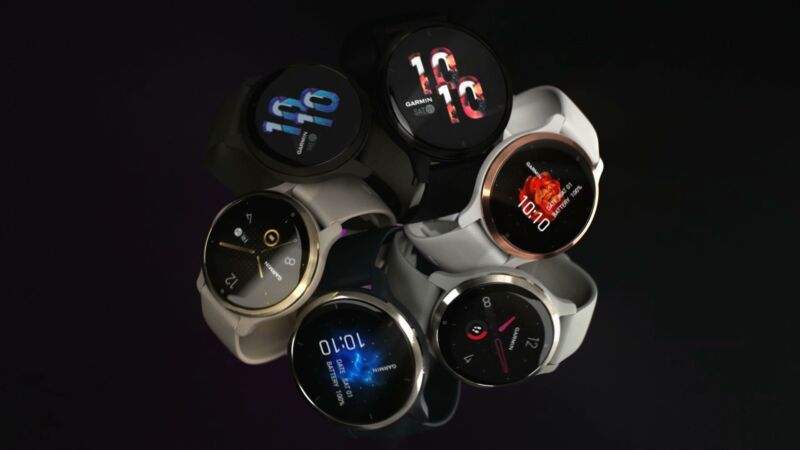
Garmin has just launched its latest pair of smartwatches, the Garmin Venu 2 and Venu 2S, aimed at those who feel Apple Watches and typical Android smartwatches just don’t give enough health and fitness data. Garmin has a seemingly bottomless roster of smartwatches, and most cater to those who train rather than just exercise casually.
The Venu 2 and 2S are both available now for $399 from various retailers, seeming best suited for somewhat serious to moderately serious trainers who want data informed by all of the latest wearable sensors (SpO2, GPS, HR). At the same time, it covers its smartwatch bases quite well with a vibrant AMOLED touchscreen, onboard music storage, smartphone notifications for iPhone and Android devices (including texts you can reply to on Android), and 11-day battery life.
Add in rapid recharging, which gives you a day of smartwatch use from a 10-minute charge (or 1 hour of GPS with music playback) and all of this should add up to quick-and-easy, everyday integration into your life and routines. Garmin wants to help this along with a revamped UI aesthetic to match the sharper, more colorful AMOLED display and a series of new aggregated metrics that explain what all the data it’s gathering actually means for your health.
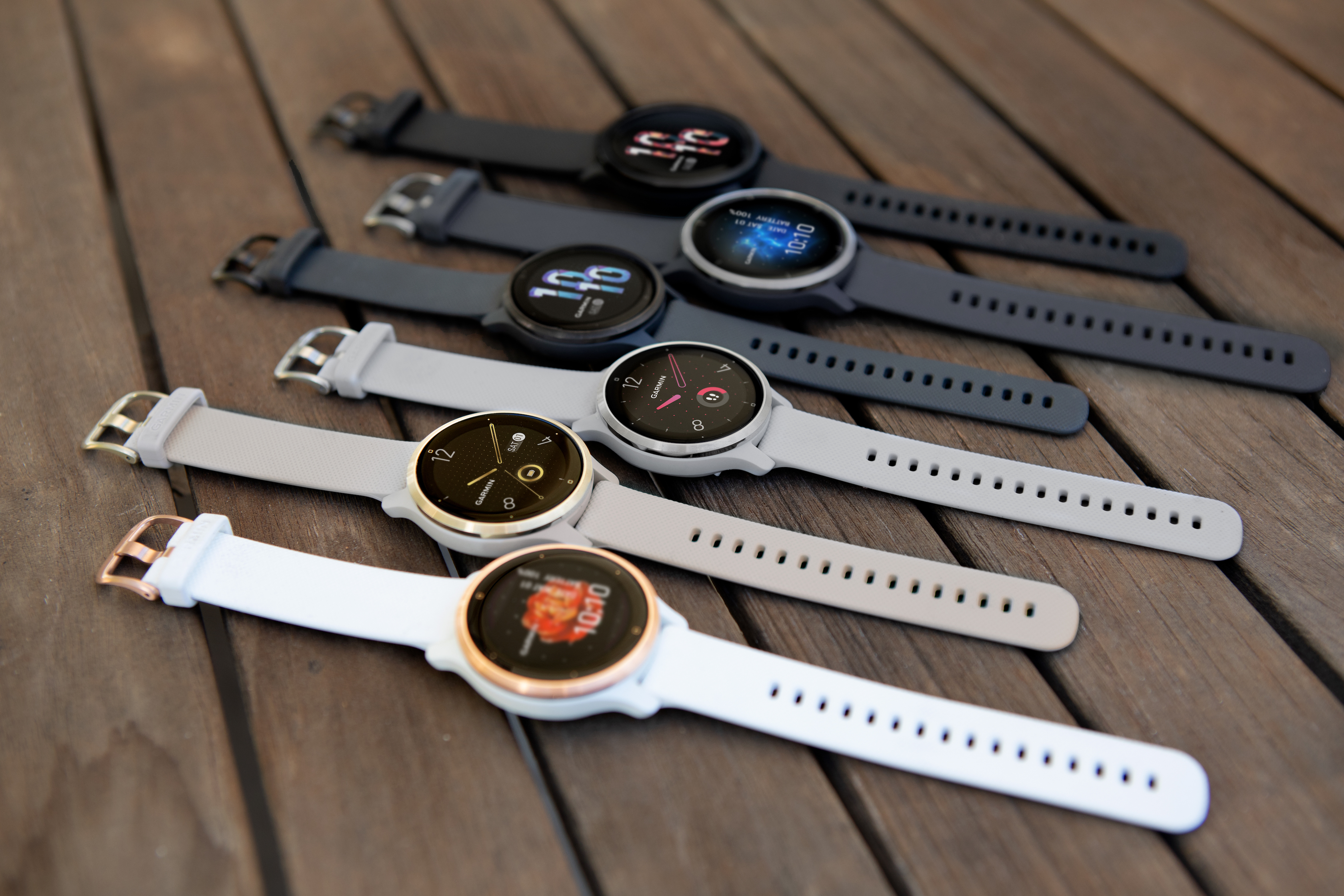 The Venu 2 and 2S come in a variety of colors.Garmin
The Venu 2 and 2S come in a variety of colors.Garmin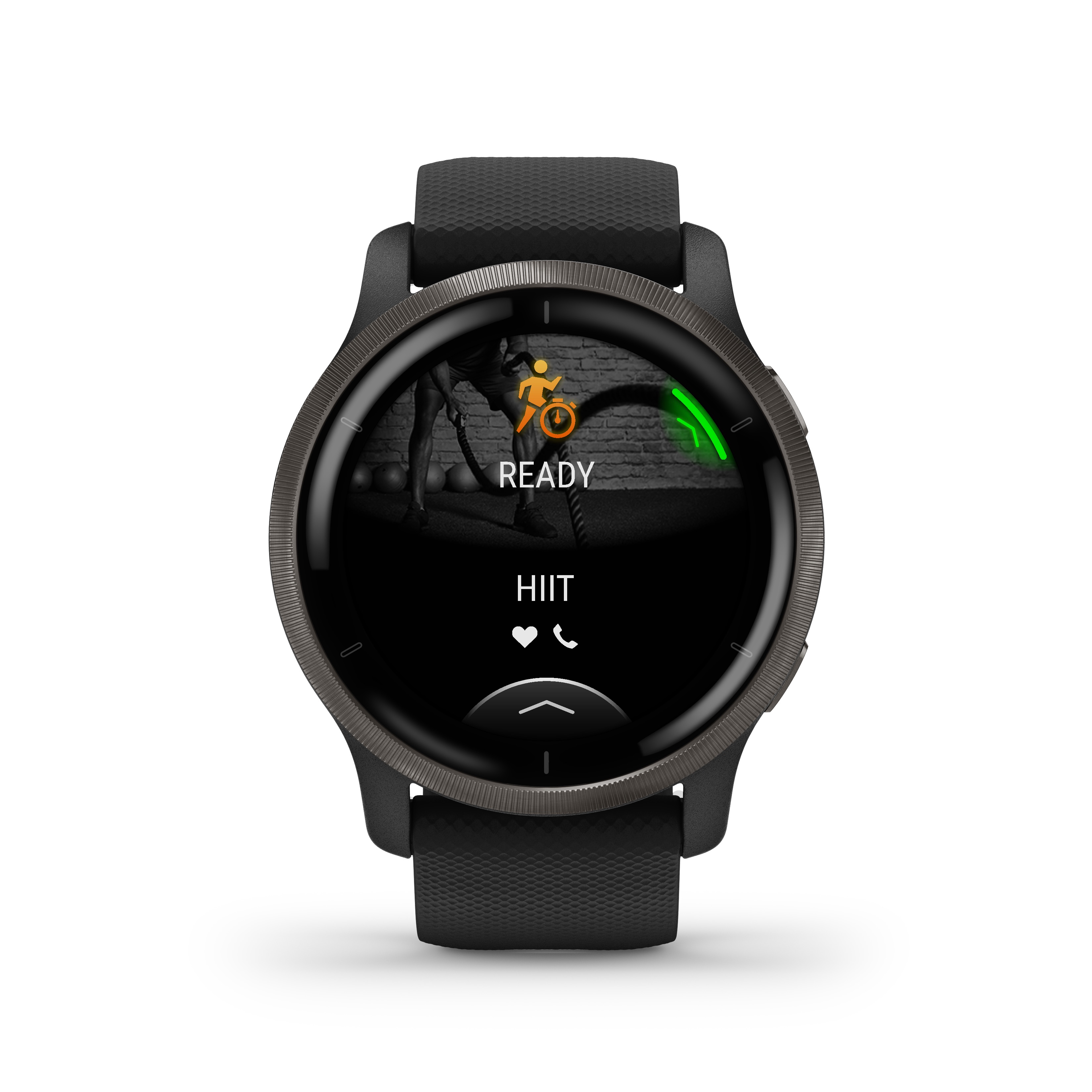 The new HIIT mode.Garmin
The new HIIT mode.Garmin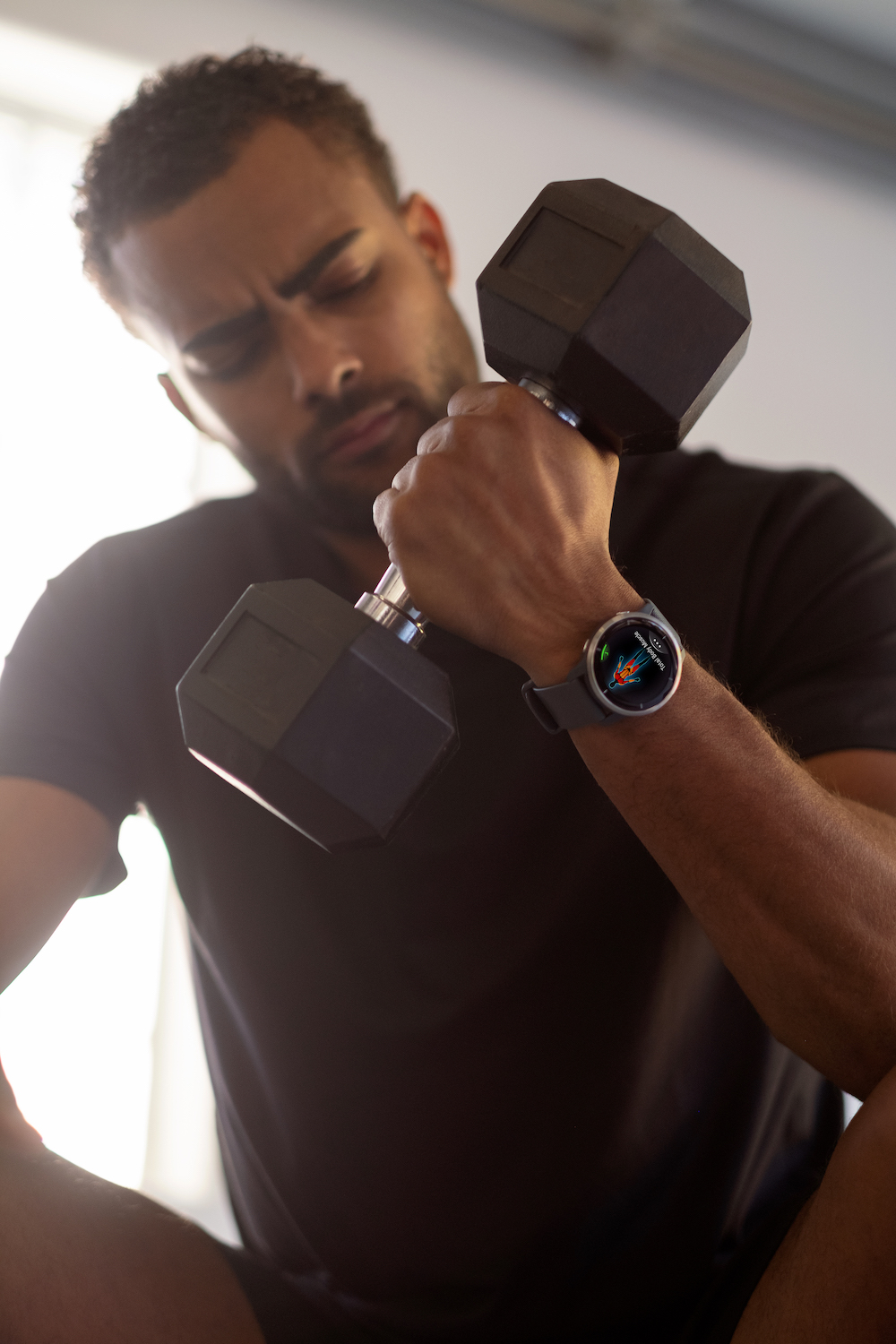 Also new is advanced strength training, which tracks personal records.Garmin
Also new is advanced strength training, which tracks personal records.Garmin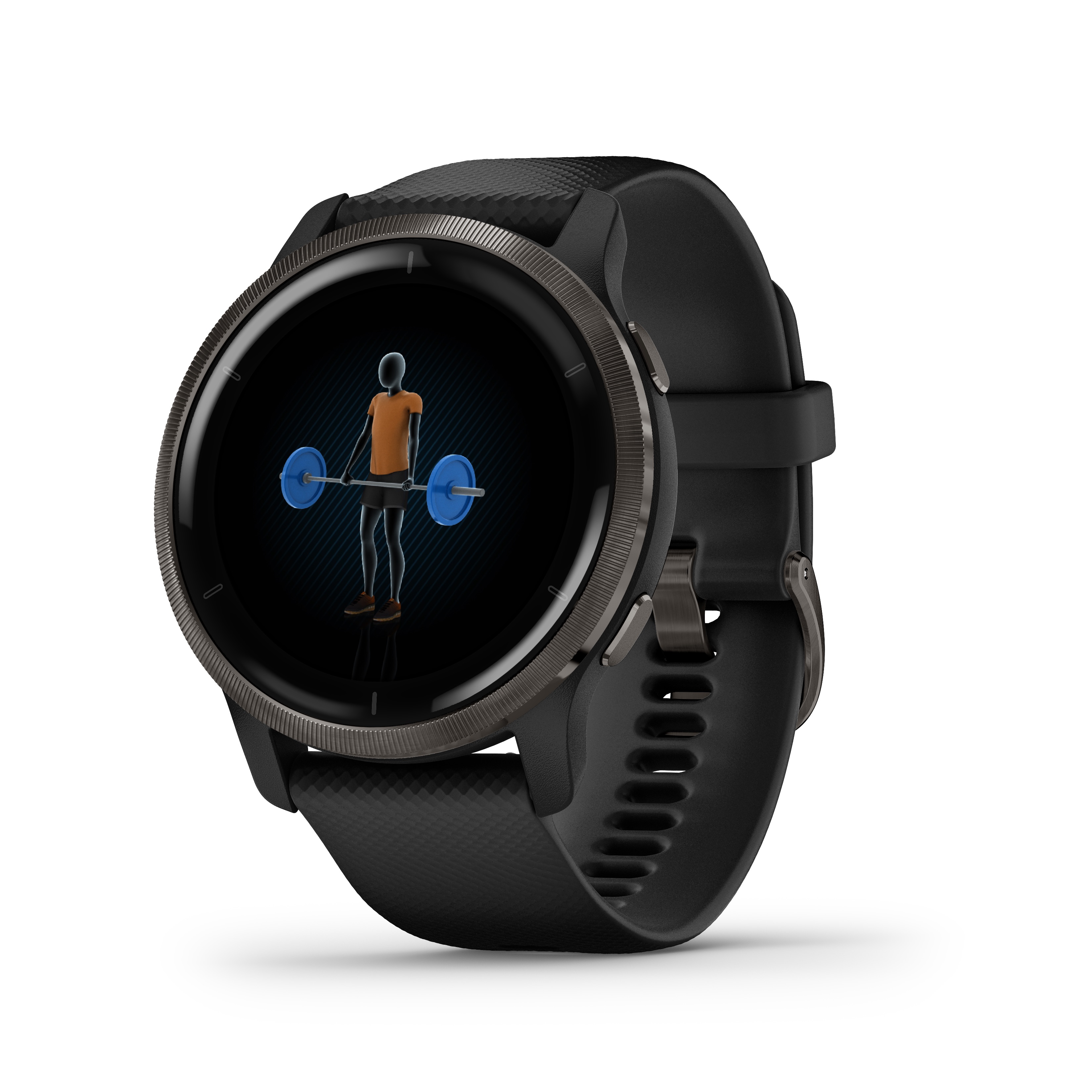 It can show you how to do exercises during workouts.Garmin
It can show you how to do exercises during workouts.Garmin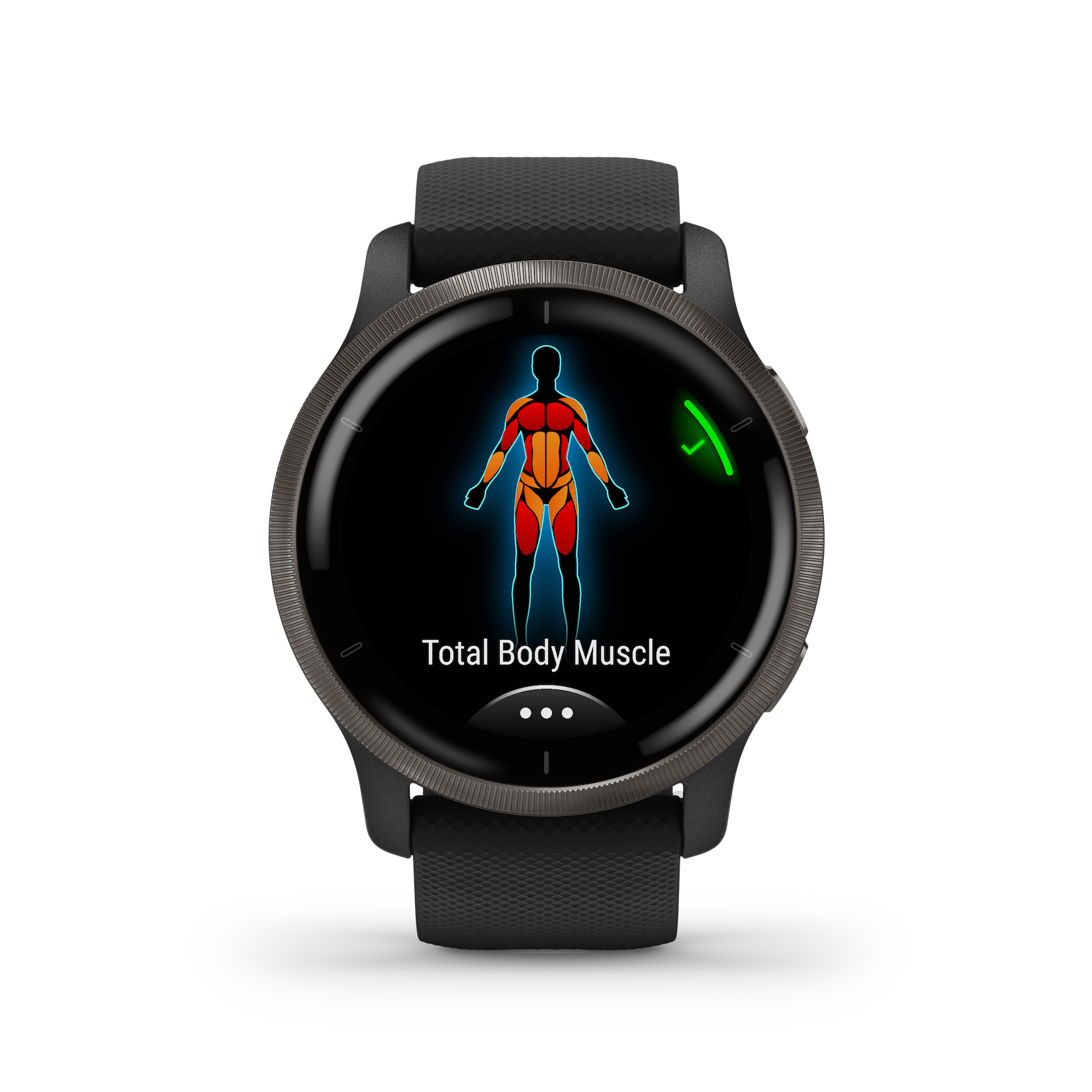 It also shows you which muscle groups you worked afterward.
It also shows you which muscle groups you worked afterward.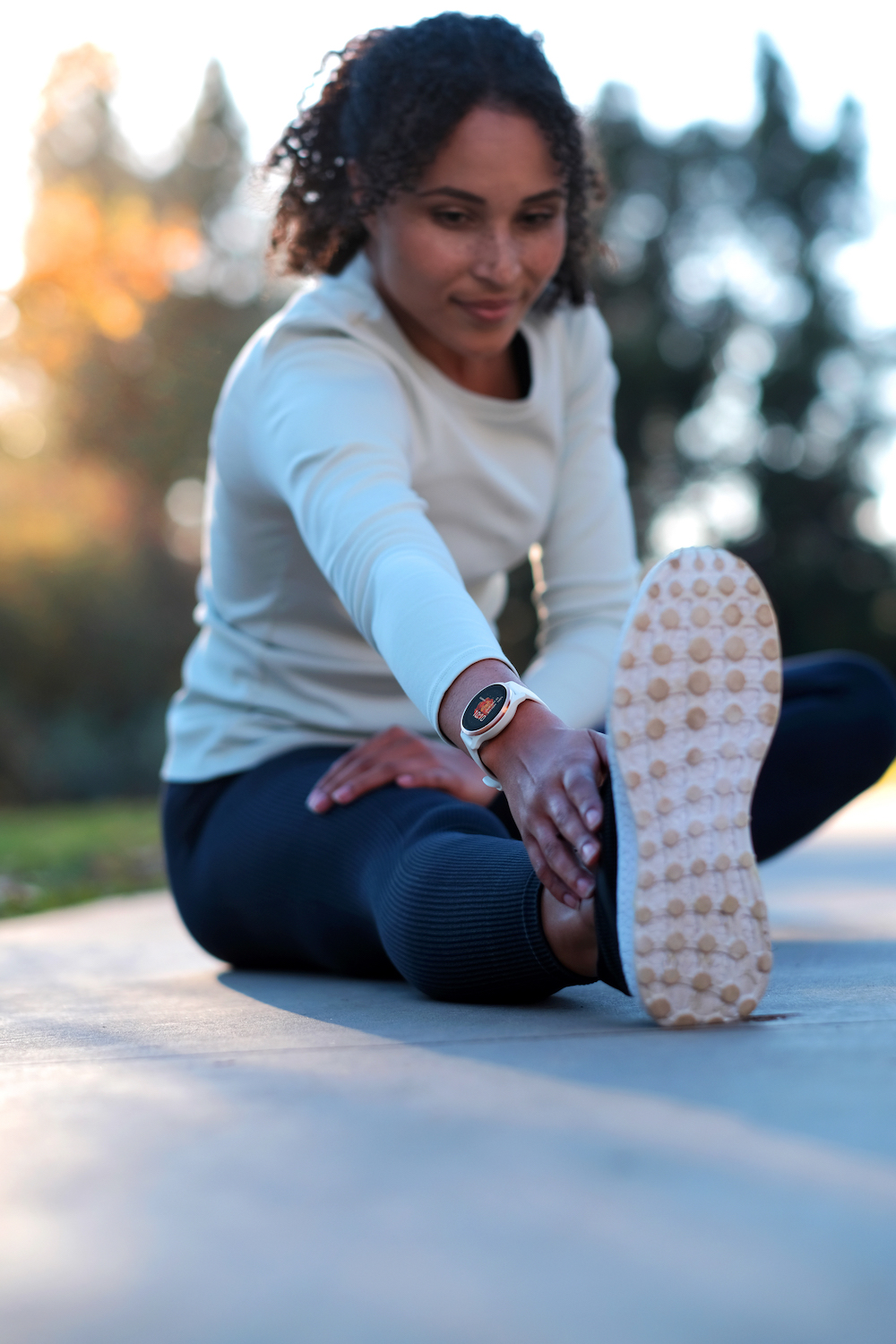 You can do guided workouts for yoga, pilates, strength training, HIIT, and over 75 preloaded workouts, or you can piece together your own from over 1,400 exercises.Garmin
You can do guided workouts for yoga, pilates, strength training, HIIT, and over 75 preloaded workouts, or you can piece together your own from over 1,400 exercises.Garmin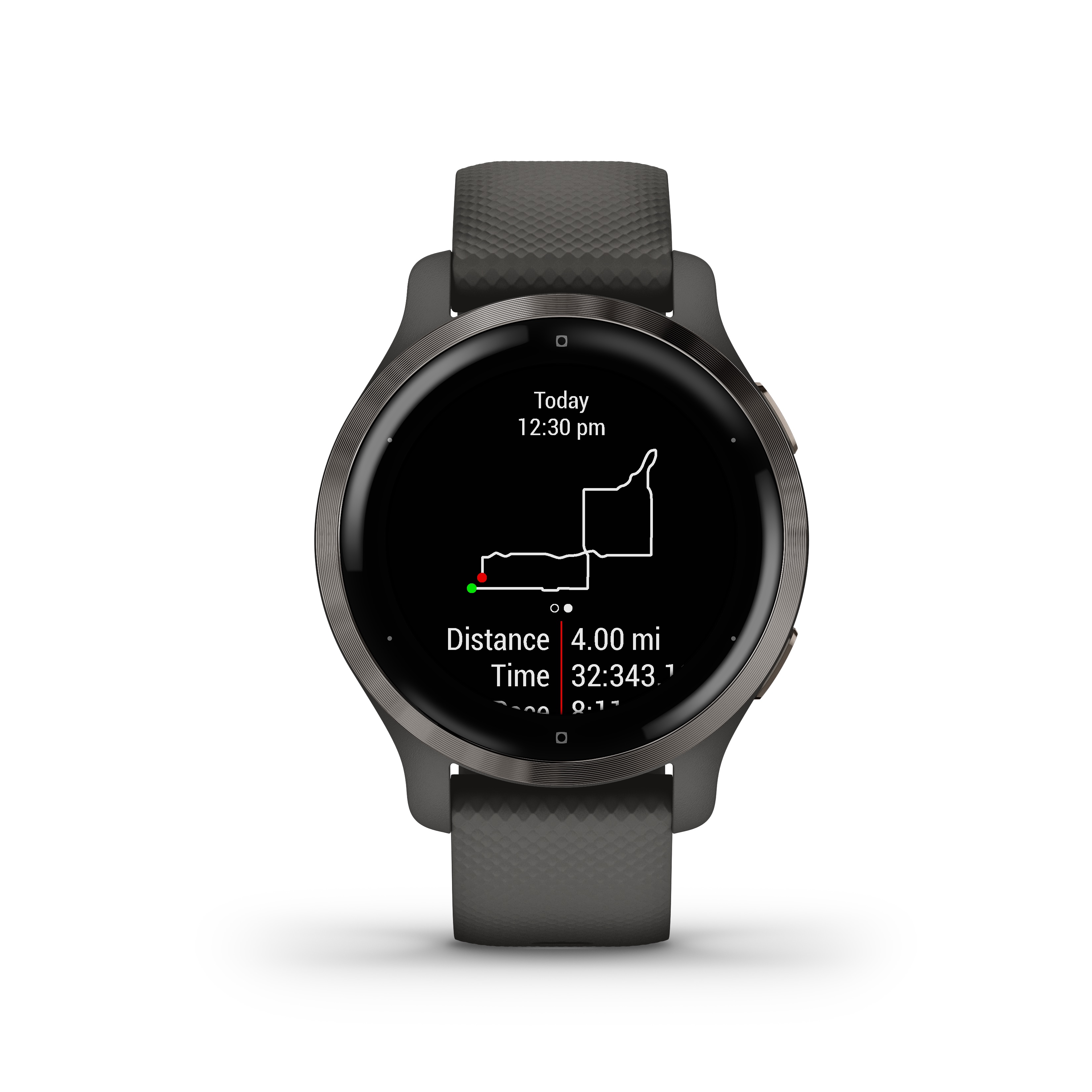 GPS lets you see the routes you've run.Garmin
GPS lets you see the routes you've run.Garmin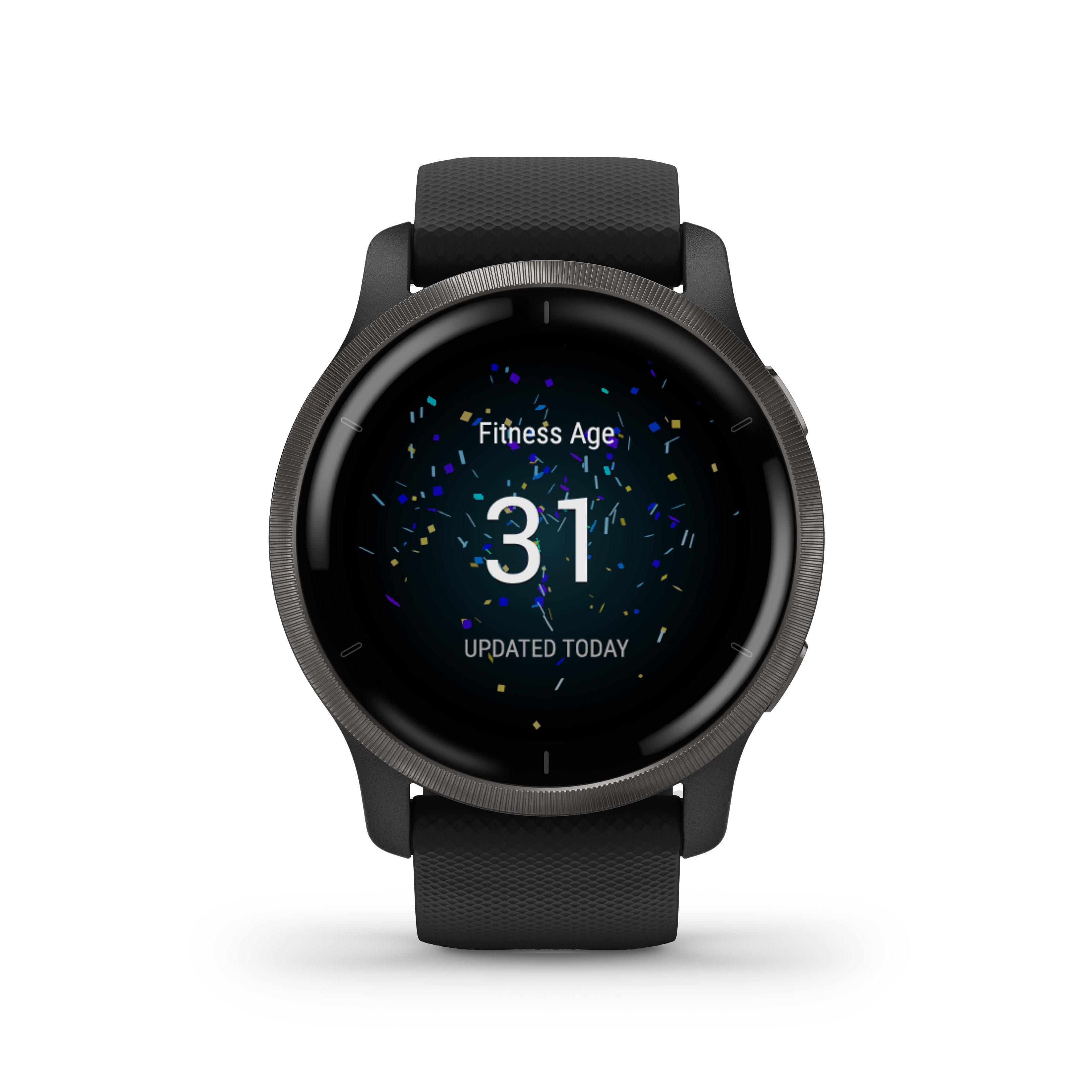 And it gives an approximate "fitness age" and tips to improve it.Garmin
And it gives an approximate "fitness age" and tips to improve it.Garmin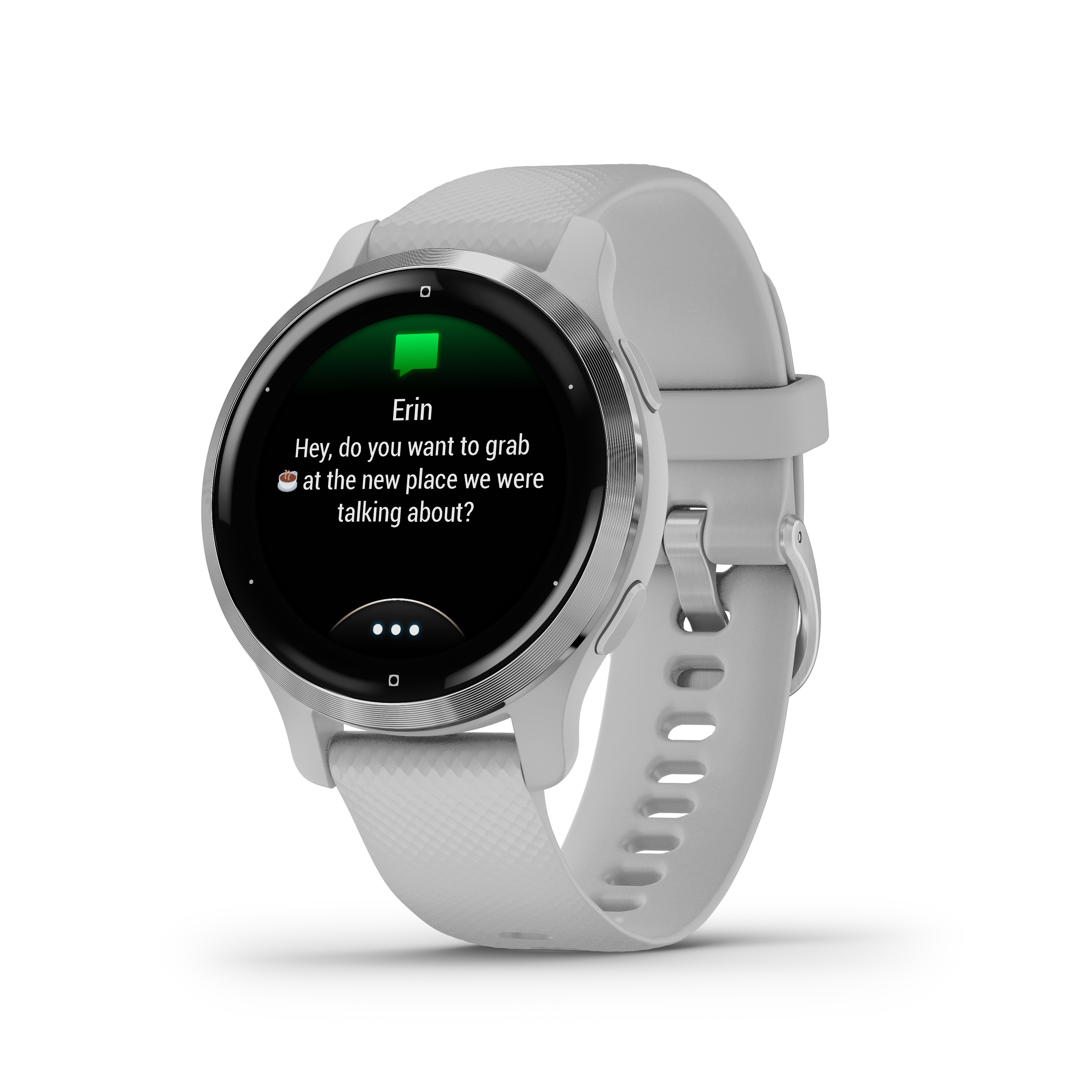 You can receive texts from your iPhone or Android phone on the Venu 2, and you can reply to them with an Android phone.Garmin
You can receive texts from your iPhone or Android phone on the Venu 2, and you can reply to them with an Android phone.Garmin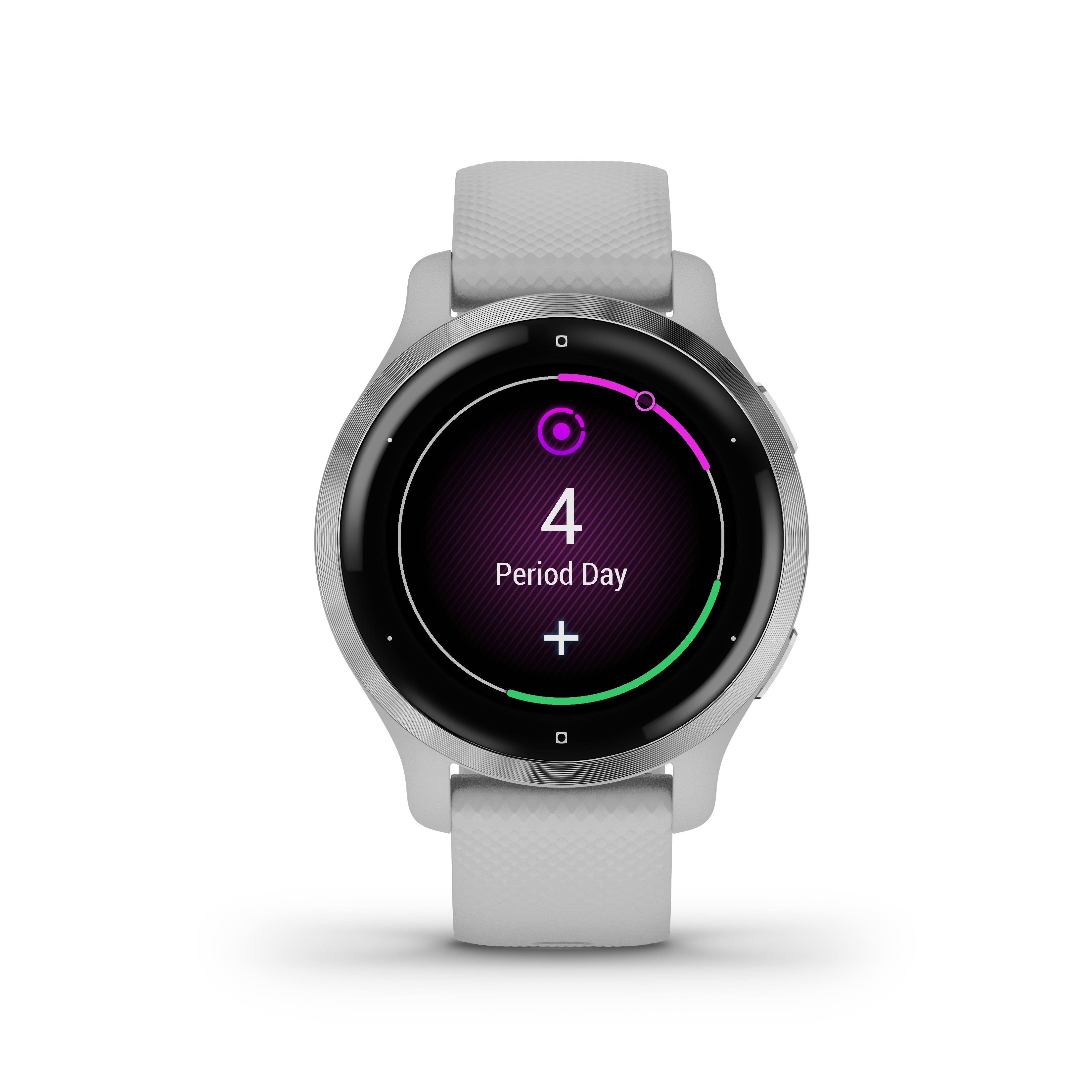 The Garmin Venu 2 shows menstrual tracking info on screen.Garmin
The Garmin Venu 2 shows menstrual tracking info on screen.Garmin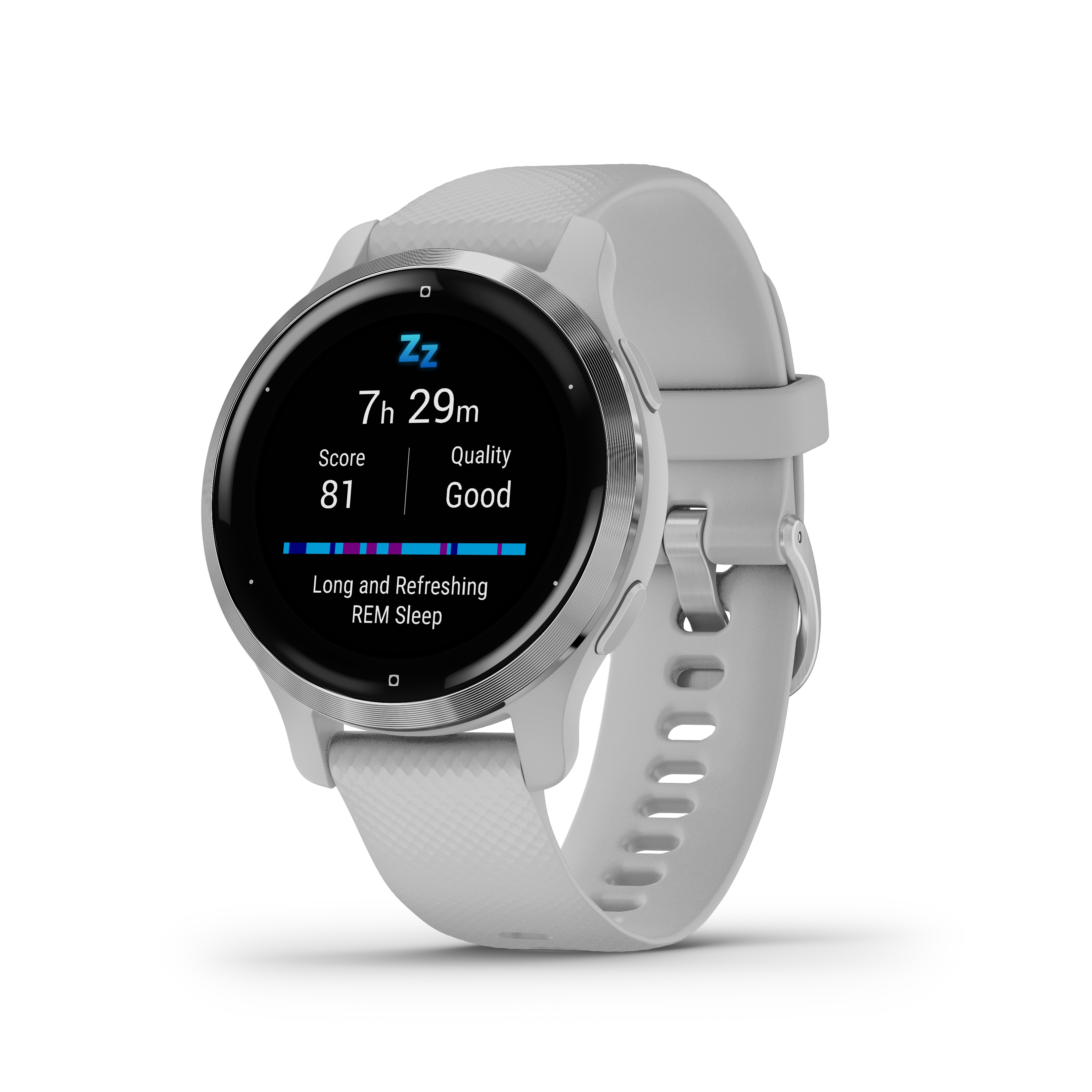 As well as sleep tracking.Garmin
As well as sleep tracking.Garmin
Features like Fitness Age, Body Battery, stress tracking, and sleep scores aren’t new to Garmin watches (though, Fitness Age is new to the Venu series), but tips to improve your fitness age, as well as sleep tracking and the all-new Health Snapshot are. Using your resting heart rate and BMI (or body fat percentage if you own a Garmin Index Smart Scale), the Venu can approximate your “fitness age” and explain how to impact this within the Garmin Connect companion app.
The Health Snapshot feature takes a more all-encompassing survey of your body’s functions via a two-minute session that records heart rate, heart rate variability (the variation in time between heartbeats, commonly looked at as an indicator of cardiovascular health), blood oxygen levels, respiration, and stress to create a health report, also viewable in the Connect app.
There are also two new activities added to the more than 25 sport-specific tracking modes: HIIT workouts and a more advanced strength-training mode. HIIT tracking will include timers for AMRAP (as many reps as possible), EMOM (every minute on the minute, where a certain number of reps are done in a minute’s time, using leftover time as the only interstitial rest), and Tabata (20 seconds on, 10 seconds off, for four minutes).
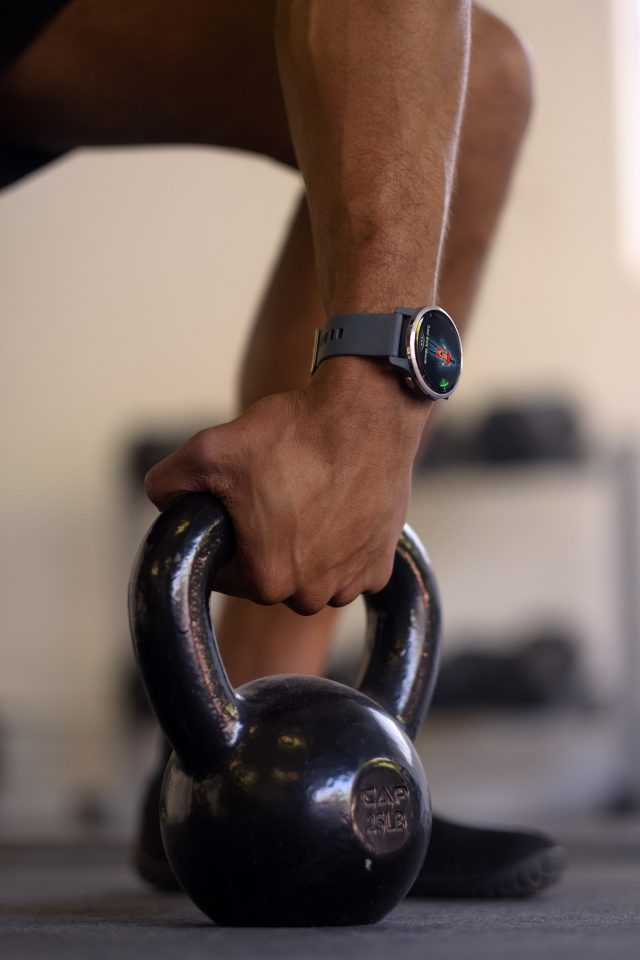
Advanced strength training can scale your one-rep max (manually logged) to applicable exercises of your choosing, lat pulldowns to upright rows, for instance, ensuring you're training efficiently. It also keeps track of your personal records (also manually logged) for barbell back squats, barbell bench presses, barbell deadlifts, barbell upright rows, and overhead barbell presses. When you're done working out, you can view your PRs, as well as the muscle groups you worked, directly on the watch.
These new modes work with the more than 75 workouts provided by Garmin or any custom workouts you've created from the 1,400+ exercises in the Garmin Connect app. Many of the exercises have videos and graphics within the app to explain them, and it displays an image of the activity on the watch while you're performing it.
From our experience with other Garmin watches, the on-watch graphic hasn’t been the most seamless way to view and complete an exercise—it’s much easier to follow along on a screen detached from your body—but having prompts on your wrist to guide you through the workout, rather than teach you the exercise, proved properly useful. Like most of Garmin’s watches, you can also enable Garmin Coach to help you train for a 5K, 10K, or half marathon with tailored, dynamic coaching to keep you on a safe and effective pace for your goals.
All the basics and then some
As far as your usual broad-range activity tracking, you're well-covered on the Venu 2/2S with GPS, blood oxygen monitor, and a heart rate sensor, as well as an altimeter, compass, and gyroscope for more outdoors-y adventures. Speaking of which, the Venu 2/2S still has access to the company’s Livetrack feature for friends and family to check up on you during hikes, runs, and other outdoor activities, as well as automatic incident detection (and a manual trigger), which can alert emergency contacts with your real-time location.
And, of course, if all’s going to plan on your adventures, you can pair up some headphones and enjoy the motivating or calming effect of up to 650 songs stored on your wrist, as well as playlists saved from Spotify, Amazon Music, and Deezer. There’s no cellular connection built in, so if you want to stream music then you’ll have to bring your phone.
The Venu 2S is 5 ATM water-resistant and comes with a 1.1-inch AMOLED display, surrounded by a stainless-steel bezel in either gold, silver, rose gold, or black, with silicone bands in beige, gray, white, or black, respectively. The Venu 2 is a bit larger at 1.3 inches and either comes with a navy or black silicone band and silver or black bezels for each. Both selling for $399.99, they graze Apple Watch pricing, but if you’re serious about your training, Garmin’s watches have proven they’re worth a look.
"want" - Google News
April 22, 2021 at 06:00PM
https://ift.tt/3nejMZ0
Garmin’s 2 new smartwatches want to make the casual athlete more advanced - Ars Technica
"want" - Google News
https://ift.tt/31yeVa2
https://ift.tt/2YsHiXz
Bagikan Berita Ini














0 Response to "Garmin’s 2 new smartwatches want to make the casual athlete more advanced - Ars Technica"
Post a Comment